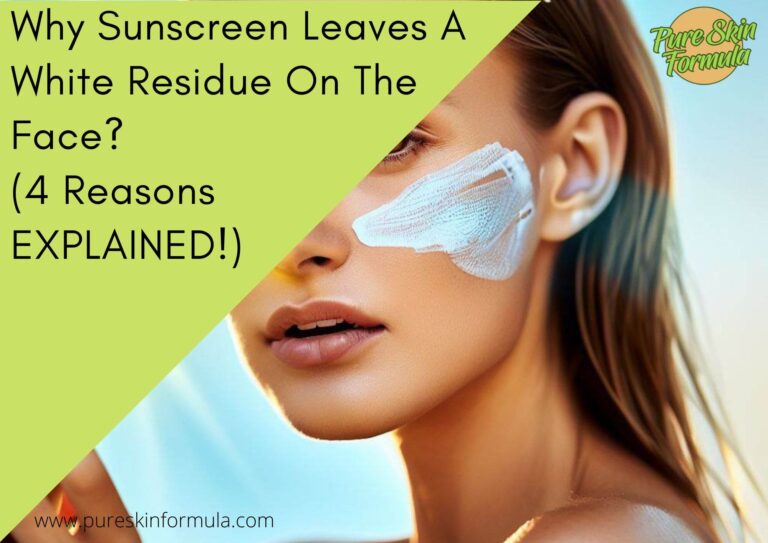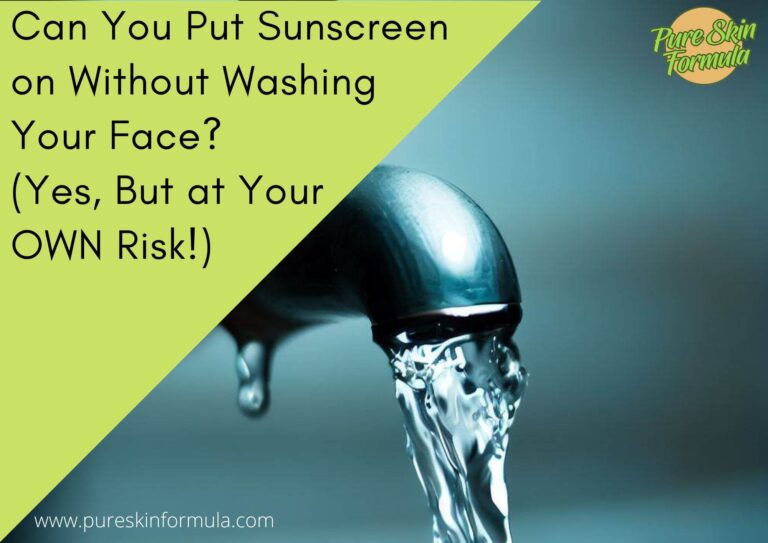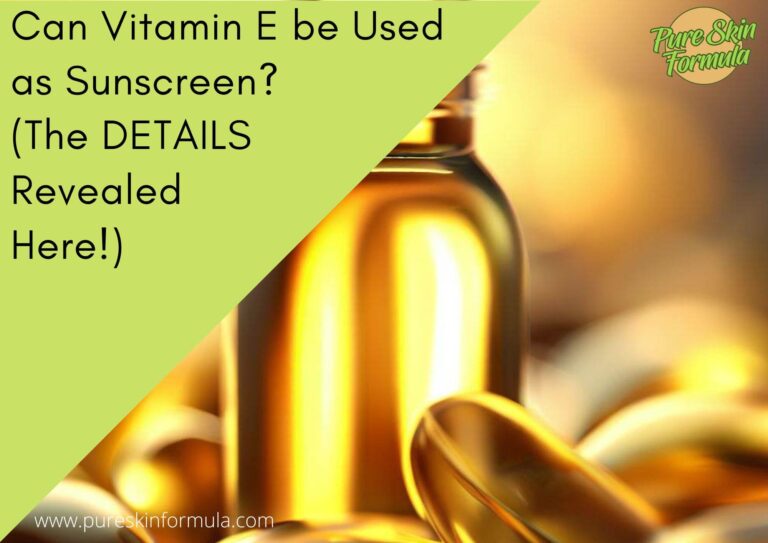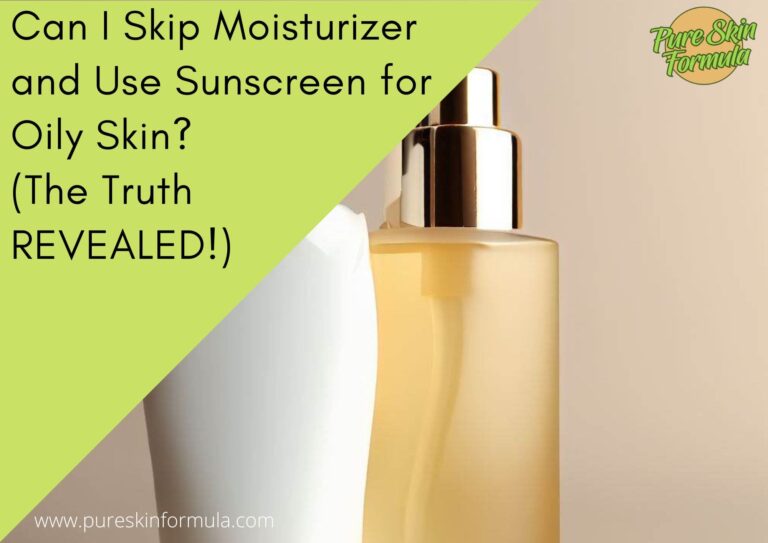This question has sparked numerous debates: can you mix these two holy grail products without compromising their effectiveness? The idea of saving time and effort by creating a multitasking blend is undeniably tempting, but what does science say about it?
In this article, I’ll break down the pros and cons of mixing sunscreen with body lotion, helping you make an informed decision about your skincare routine.
I’ll explore this combination’s convenience, improved application, and potential drawbacks, such as dilution of SPF and altered formulations. By understanding the critical differences between sunscreen and body lotion, you’ll be equipped with the knowledge to make the best choice for your skin.
Let’s start.
Can I mix sunscreen with my body lotion?
Yes, you can mix sunscreen with your body lotion, but it’s essential to consider the potential drawbacks. While combining both can offer convenience and hydration benefits, it may dilute the sunscreen’s SPF and reduce its effectiveness in protecting your skin from harmful UV rays.
Sunscreen is specifically formulated to provide optimal sun protection, and altering its formulation by mixing it with other products can compromise its stability and efficacy.
Additionally, certain ingredients in body lotions may interact with sunscreen ingredients, potentially leading to skin irritation or reduced sun protection.
Applying sunscreen separately from your body lotion is generally recommended to ensure adequate sun protection. This allows the sunscreen to form a barrier on the skin and effectively block UV rays.
Alternatively, you can opt for moisturizers with added SPF or multipurpose products like tinted moisturizers that offer hydration and sun protection. It’s always a good idea to consult with skincare professionals for personalized advice based on your skin type and specific needs.
Let’s dig deeper into this topic.
Understanding sunscreen and body lotion
Sunscreen is a skincare product specifically designed to protect your skin from the harmful effects of the sun’s ultraviolet (UV) rays. Its primary purpose is to act as a shield against both UVA and UVB radiation.
UVA rays penetrate deep into the skin and contribute to premature aging and skin damage, while UVB rays primarily cause sunburns.
Sunscreen contains active ingredients that work together to provide sun protection. These ingredients can be classified into two main categories: chemical filters and physical blockers.
Chemical filters, such as avobenzone and octinoxate, absorb UV rays and convert them into heat energy. On the other hand, physical blockers like zinc oxide and titanium dioxide create a physical barrier that reflects and scatters UV rays away from the skin.

Conversely, body lotion is designed to moisturize and hydrate the skin, keeping it soft, smooth, and supple. Its primary purpose is to replenish and restore moisture to the skin, especially after cleansing or exposure to environmental factors that can cause dryness.
Body lotions typically contain various ingredients, including humectants, emollients, and occlusives. Humectants, such as glycerin and hyaluronic acid, attract moisture from the air and help retain it in the skin.
Like shea butter and oils, emollients smooth and soften the skin, enhancing its texture and appearance. Occlusives, such as petrolatum or dimethicone, create a barrier on the skin’s surface, preventing moisture loss and promoting hydration.
Body lotion can improve skin elasticity, enhance protective barriers, and promote a more youthful and radiant appearance. It can also reduce the risk of developing certain skin conditions, such as eczema or dermatitis.
Now we know the main facts about the two products. But what happens if you mix them?
The pros and cons of mixing sunscreen with body lotion
By combining the two products, you save time. It eliminates the need for multiple layers on your skin, streamlining your skincare routine and making it more efficient. So, if you’re always on the go or prefer a more straightforward approach, mixing sunscreen with body lotion can be a time-saving hack.
Mixing sunscreen with body lotion can enhance the application process, ensuring better coverage across your skin. Body lotions often have a smooth and lightweight texture that spreads quickly, making it easier to evenly distribute sunscreen-infused cream onto your skin.
Another advantage of combining both products could be the added hydration and nourishment. By incorporating sunscreen into your body lotion, you protect your skin from UV damage and provide it with essential moisture and nutrients.
I can see the following disadvantages.

There is a risk of diluting the sunscreen’s sun protection factor (SPF). This dilution may compromise the effectiveness of the sunscreen, leaving your skin more vulnerable to sunburns and long-term sun damage.
The blend can alter the formulation of the sunscreen. The skincare products are developed with specific ingredient combinations and pH levels to maintain stability and maximize effectiveness. Combining sunscreen with other products may disrupt this delicate balance.
If you mix sunscreen with body lotion in a container for long-term usage, you may break the stability and shelf life of the sunscreen. The active ingredients may be compromised, potentially reducing their effectiveness over time.
Changes in the formulation can impact the product’s shelf life, making it less reliable for long-term use.
OK. Now you know why you should or should not mix both products. My personal opinion? I would instead not blend them.
But if you decide to take action, I will show you some tips on how to do it more effectively.
Guidelines for mixing sunscreen with body lotion
Check the compatibility of the two products by examining their ingredients. Look for any overlapping components or potential conflicts that could affect the efficacy of the sunscreen or cause skin irritation.
Some substances in body lotions, such as oils or fragrances, may not play well with the active ingredients in the sunscreen, depending on whether it is physical or chemical.
Reading the labels and understanding the ingredients list can help identify potential issues. If you notice any known conflicts or have sensitive skin prone to reactions, avoiding mixing the products is best to prevent unwanted side effects.

Instead, consider layering them separately or using alternative sun protection methods.
To ensure adequate sun protection, mix the sunscreen and body lotion in a ratio that doesn’t hurt the sunscreen’s original SPF too much. For instance, if you combine equal parts of sunscreen and body lotion, the result may be an SPF lower than you need for proper sun protection.
Adjusting the ratio to include more sunscreen can help maintain a higher level of SPF.
When combining sunscreen with body lotion, consider your skin type and sensitivity. Certain skin types, like oily or acne-prone, may not respond well to heavy or greasy creams.
If you have specific skin concerns, it’s advisable to choose lightweight, non-comedogenic body lotions that won’t clog your pores or exacerbate any existing skin conditions.
Patch testing on a small skin area can help determine if the mixture suits your skin type and if any adverse reactions occur.
Alternatives to mixing sunscreen with body lotion
Of course, the first piece of advice is to layer these products separately. Start by applying chemical sunscreen directly to your skin, ensuring thorough coverage of all exposed areas. Allow it to fully absorb before proceeding to the next step.
Then use your preferred body lotion to moisturize and nourish your skin. This method allows you to maintain the effectiveness of the sunscreen without diluting it and ensures that both products serve their intended purposes effectively.
If using a physical sunscreen, you should start with your lotion first.
To simplify your skincare routine, consider using moisturizers that already include sun protection factor (SPF). These products combine the benefits of hydration and sun protection in one formula.
Look for moisturizers labeled “broad-spectrum” to protect against UVA and UVB rays. Search for an appropriate SPF level, depending on your sun protection needs.
You can also consider multipurpose products like tinted moisturizers or BB creams. They offer a combination of hydration, sun protection, and light coverage, providing a natural-looking finish while simplifying your daily routine.
Tinted moisturizers provide sheer coverage with added SPF, while BB creams offer slightly more coverage with additional skincare benefits. They can be applied directly to clean skin, saving time and effort compared to mixing sunscreen and body lotion separately.
Best practices for sun protection and skincare
Start by using an adequate amount of sunscreen to cover your entire body. Don’t skimp on the amount; using too little can reduce the effectiveness of the sunscreen. Remember easy-to-miss areas like the back of your hands or the tops of your feet.

Apply sunscreen 15 to 20 minutes before sun exposure to allow it to absorb into the skin thoroughly. Reapply sunscreen every two hours or immediately after swimming, sweating, or towel-drying to maintain its effectiveness.
A sunscreen with an SPF of 30 or higher is recommended for adequate sun protection. A high SPF doesn’t mean the sunscreen is foolproof, so following proper application and reapplication practices is essential.
How important is the regular skincare routine?
It matters a lot. Cleanse your face and body with gentle cleansers suitable for your skin type. Exfoliate regularly to remove dead skin cells and promote cell turnover. After cleansing, moisturize your skin to keep it hydrated and nourished.
What about clothing, hats, and shade?
They can help. Wear protective clothing that covers your arms, legs, and torso when spending time in the sun. Opt for tightly woven fabrics and darker colors that offer better UV protection. Wear a wide-brimmed hat to shield your face, neck, and ears from the sun.
Seek shade whenever possible, especially during peak sun hours between 10 am and 4 pm. Take breaks under umbrellas or find shelter under trees to reduce direct sun exposure. These additional measures complement sunscreen use and protect against harmful UV rays.
Conclusion
Combining sunscreen with body lotion ultimately depends on personal preference and careful consideration. While there are advantages in terms of convenience, improved application, and added hydration, there are also potential disadvantages, such as dilution of SPF and reduced stability.
It’s essential to weigh these factors against your specific skincare needs and concerns.
Proper sun protection should always be a priority, so if you mix these products, ensure you maintain the sunscreen’s effectiveness and SPF level. Alternatively, you can explore alternatives like layering different products, using moisturizers with added SPF, or opting for multipurpose products.
As always, consult with skincare professionals for personalized advice.
Thank you for reading!
Valeria







